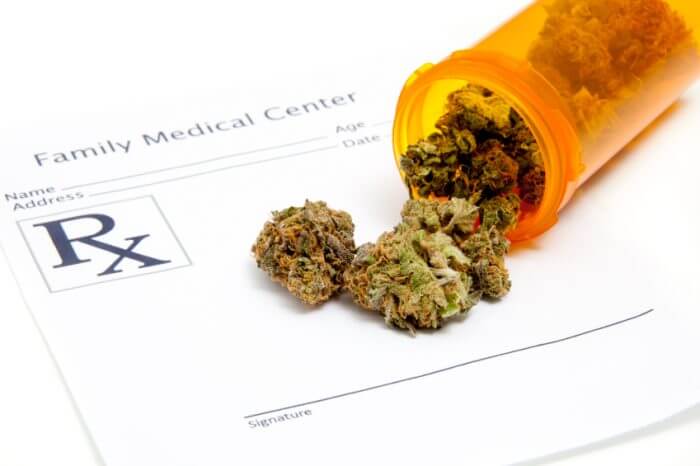Marijuana is one of the most widely-used illicit drugs throughout the world. According to statistics from the Substance Abuse and Mental Health Services Administration, about 16.7 million persons (6.6 percent of the US general population) aged 12 and older admitted to using marijuana within the last month. Because of its popularity, it is no surprise marijuana has also appeared among the driving population. It is estimated that about 2.4 percent of those driving under the influence are driving under the influence of cannabis (DUIC), second only to driving under the influence of alcohol.
All 50 states have made it illegal to drive or operate a vehicle under the influence of marijuana, just as it is illegal to drive or operate a vehicle under the influence of alcohol. Using marijuana lawfully or illegally can cause physical or mental impairment that could result in unsafe driving.
Driving Under the Influence of Cannabis–DUIC
There has not been as much research on the effects of marijuana on drivers as there has been on alcohol. However, the studies that have been done show that heavy marijuana use will delay the user’s response time, impairing their driving. The THC within marijuana is what causes the extreme effects on the brain and body. It is also what is tested in your blood or urine to see if you have been using marijuana. According to statistics, approximately 6 to 11 percent of fatal accident victims test positive for THC. Though this is a lower fatality percentage than those who are using alcohol, it is still a problem that should be addressed.
Each state has its own unique laws about the use of marijuana. Some states have made its use legal while some states continue to consider marijuana an illegal substance. All states have similar laws stating that driving under the influence of marijuana is illegal and will not be tolerated. The repercussions for driving under the influence of cannabis are the same as driving under the influence of alcohol, as it is viewed as the same crime.
First time California DUI offenders who cause no injury or death will be charged with a misdemeanor that is punishable with time in a county jail, a fine of around $1000, mandatory substance abuse treatment, a suspended or restricted license, and an average of three years of probation.
If the individual driving under the influence of cannabis is responsible for an accident that results in bodily injury or death, he or she can be charged with a felony, regardless of whether or not it is the first offense. Felonies are extremely serious and punishable by imprisonment in state prison as well as numerous fines and other penalties. If a driver is found to be in possession of marijuana, legally or illegally, and is found to be driving under the influence, that person will face even more serious legal repercussions.
Testing for the Influence of Marijuana
Field sobriety tests come in a variety of forms and are primarily used to identify drivers who are intoxicated. These tests have been shown to identify 88 percent of drivers who drive under the influence of alcohol. However, according to a study from the journal Psychopharmacology, these field sobriety tests only identify about 30 percent of drivers who are driving under the influence of THC.
Experts conclude that those who are more accustomed to smoking marijuana are not as likely to be identified by field sobriety tests, especially compared to those who are intoxicated by alcohol.
Blood-alcohol tests, often conducted with a Breathalyzer, are very affective at identifying drunk drivers. THC levels, however, must be measured from blood or urine samples. With urine tests, police look for a metabolite of THC rather than the drug itself. However, this type of test can return a positive result days or weeks after someone has actually smoked, and is not effective at proving that an individual was driving under the influence of marijuana at the time of the arrest. States are divided on what is considered a criminal amount of THC in the blood or urine.
The Risks of Driving Under the Influence of Marijuana vs Alcohol
Though the effects of THC may not be as easy to identify as those of alcohol, it has been shown through extensive research that marijuana use can affect driving ability. In fact, experts widely accept the conclusion that there is a twofold increase in the risk of an accident if there is any measurable amount of THC in the driver’s bloodstream. Alcohol, by comparison, has an almost 20-fold increase in the risk of a fatal accident compared with sober drivers in the 20-year old driver range. For drivers 34 and older, the increase is nine fold. Both are still higher than the THC risks, but all are risks for innocent victims who may be injured or killed by an impaired driver.
Experts conclude that the difference in risk between marijuana and alcohol can most likely be explained by two things:
- Stoned drivers are shown to drive differently from drunk drivers. According to research, drunk drivers tend to speed and overestimate their skills. Stoned drivers, on the other hand, tend to drive more cautiously, though both have a delayed response time.
- Location plays a key role in drunk driving vs. stoned driving. Because marijuana is illegal in most places, people tend to smoke it in the safety of their homes. Alcohol, on the other hand, is legal and individuals commonly go to bars or restaurants to drink. This places more drunk drivers than THC-impaired drivers on the roads.
Though alcohol seems to be much riskier, experts concluded that the dangers of being stoned are really revealed when drivers are confronted with multiple tasks at once or with something unexpected. The delay in reaction time and mental processing make even cautious drivers dangers on the road. Driving under the influence, whether it is alcohol or marijuana, is dangerous and foolish, with the same penalties and repercussions for both.
If you have been the victim of a drunk- or drugged-driving accident, it is time to exercise your rights and talk to a personal injury attorney about recovering compensation for your injuries.











